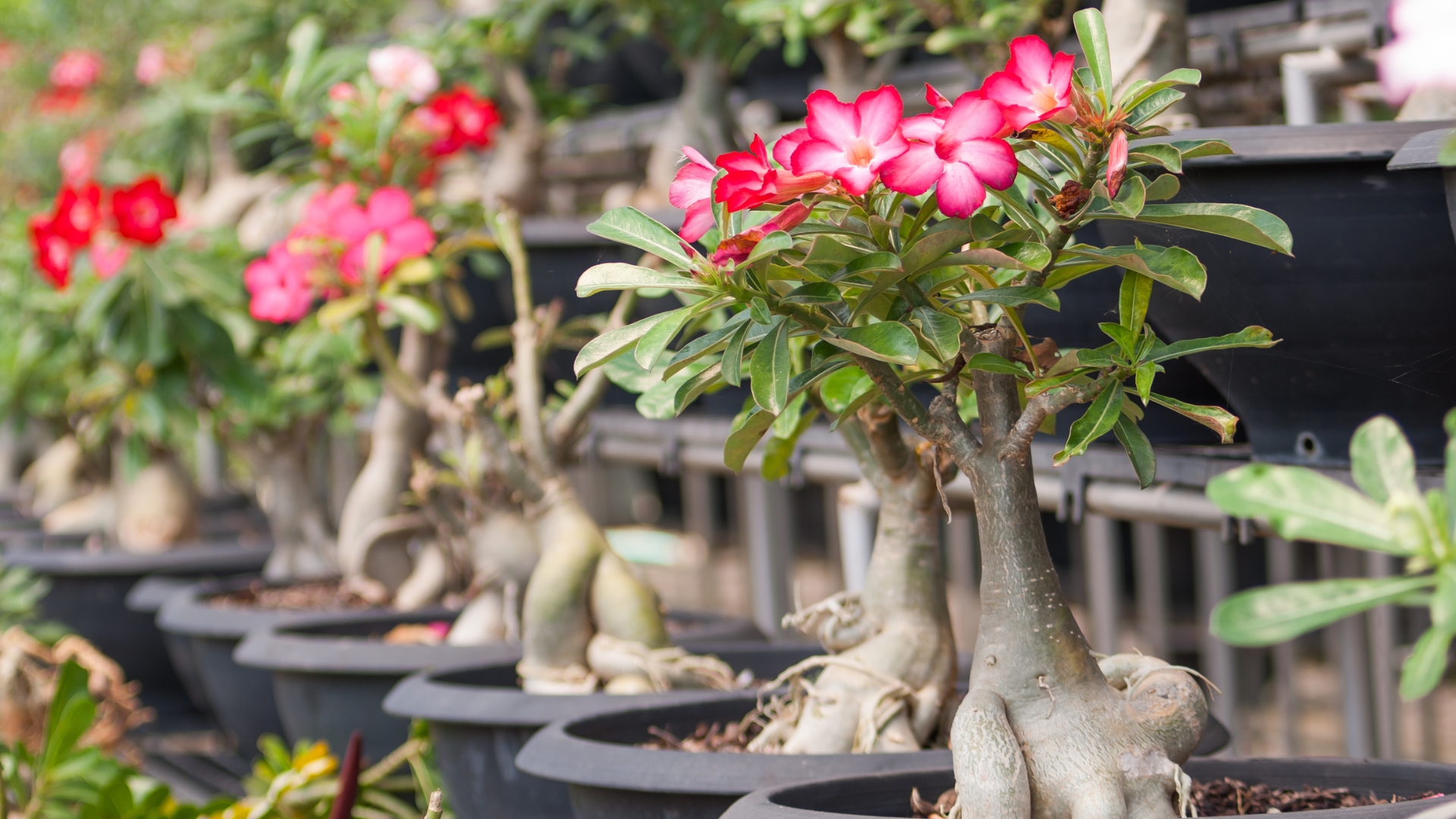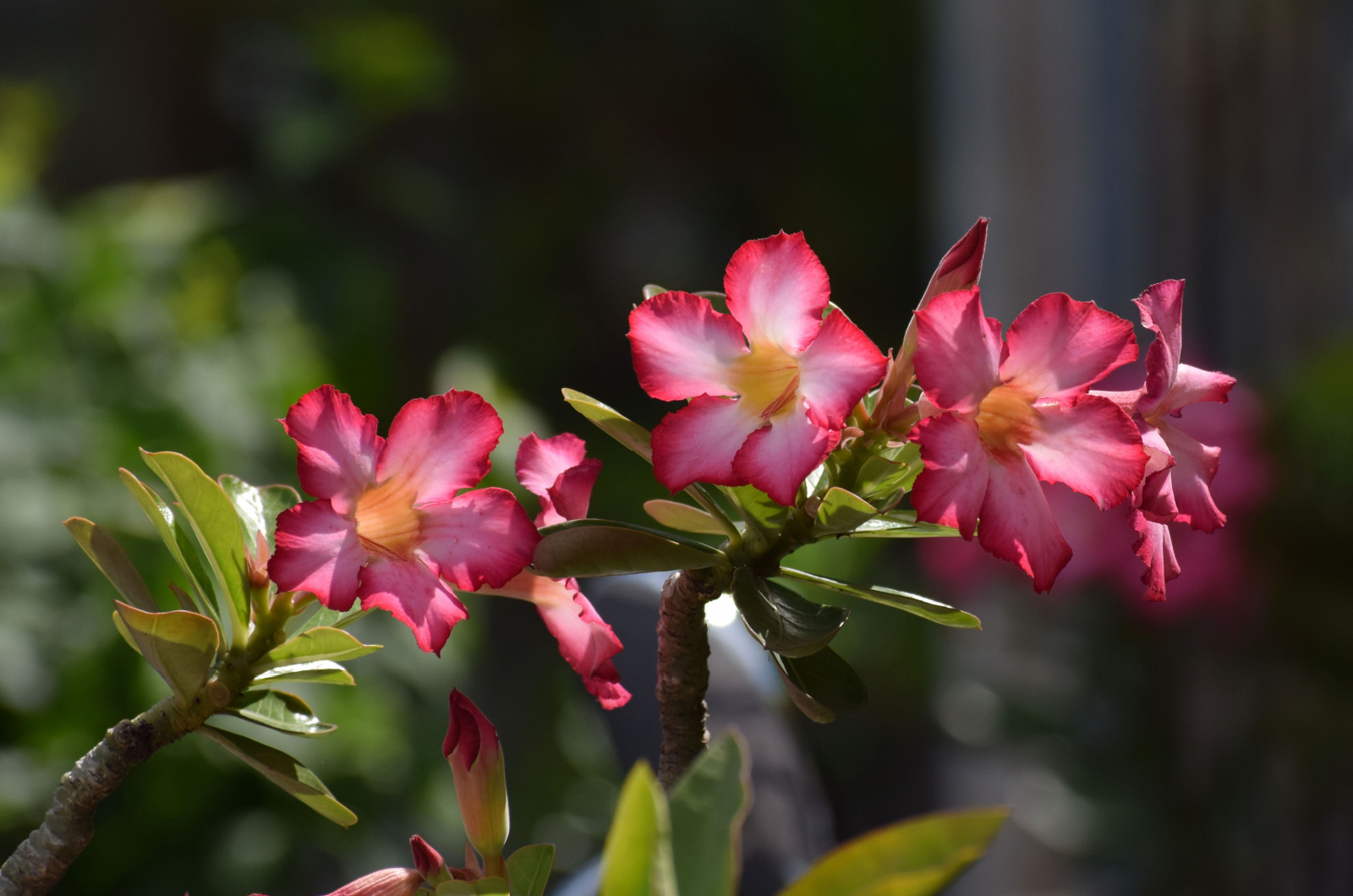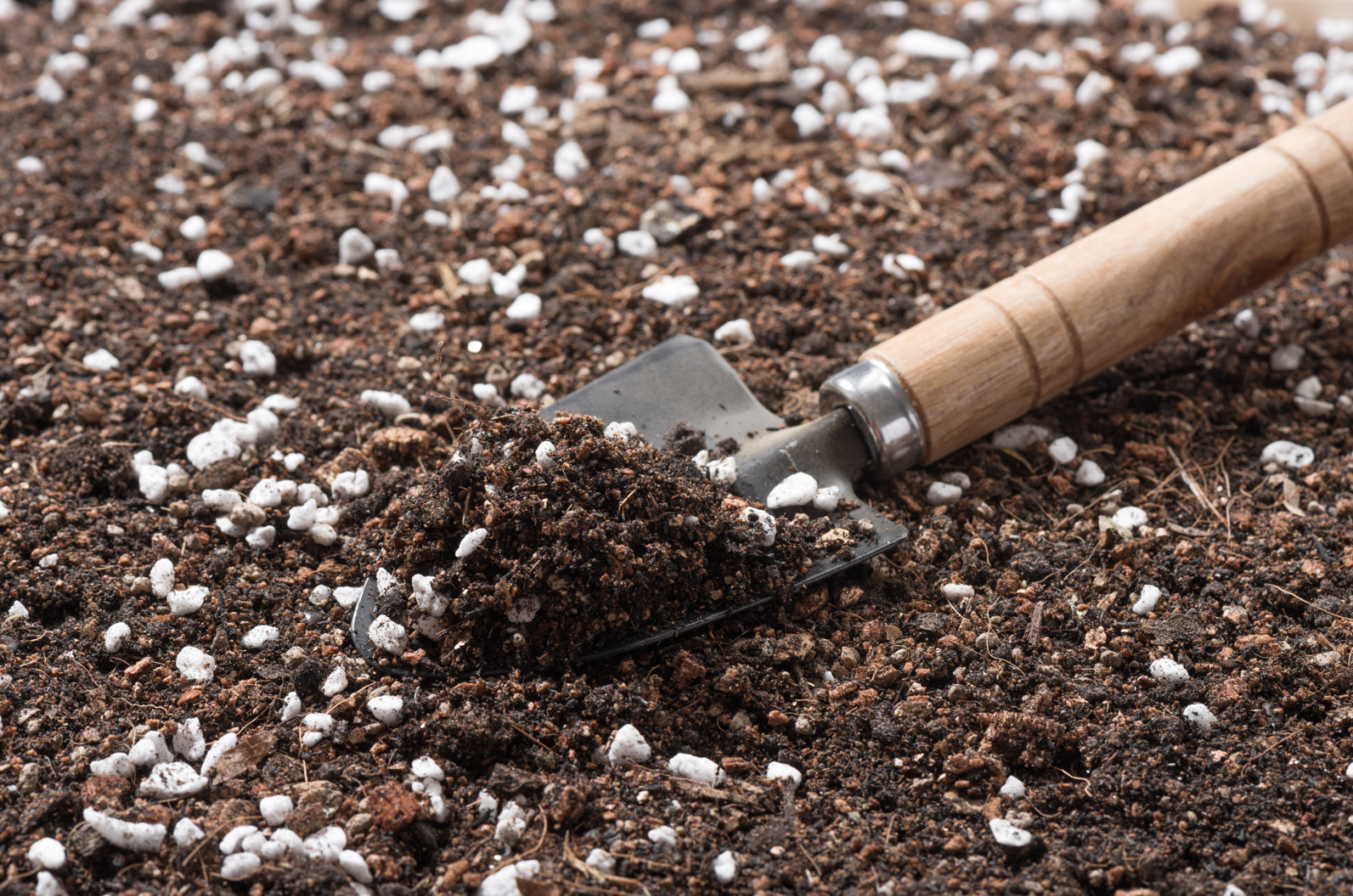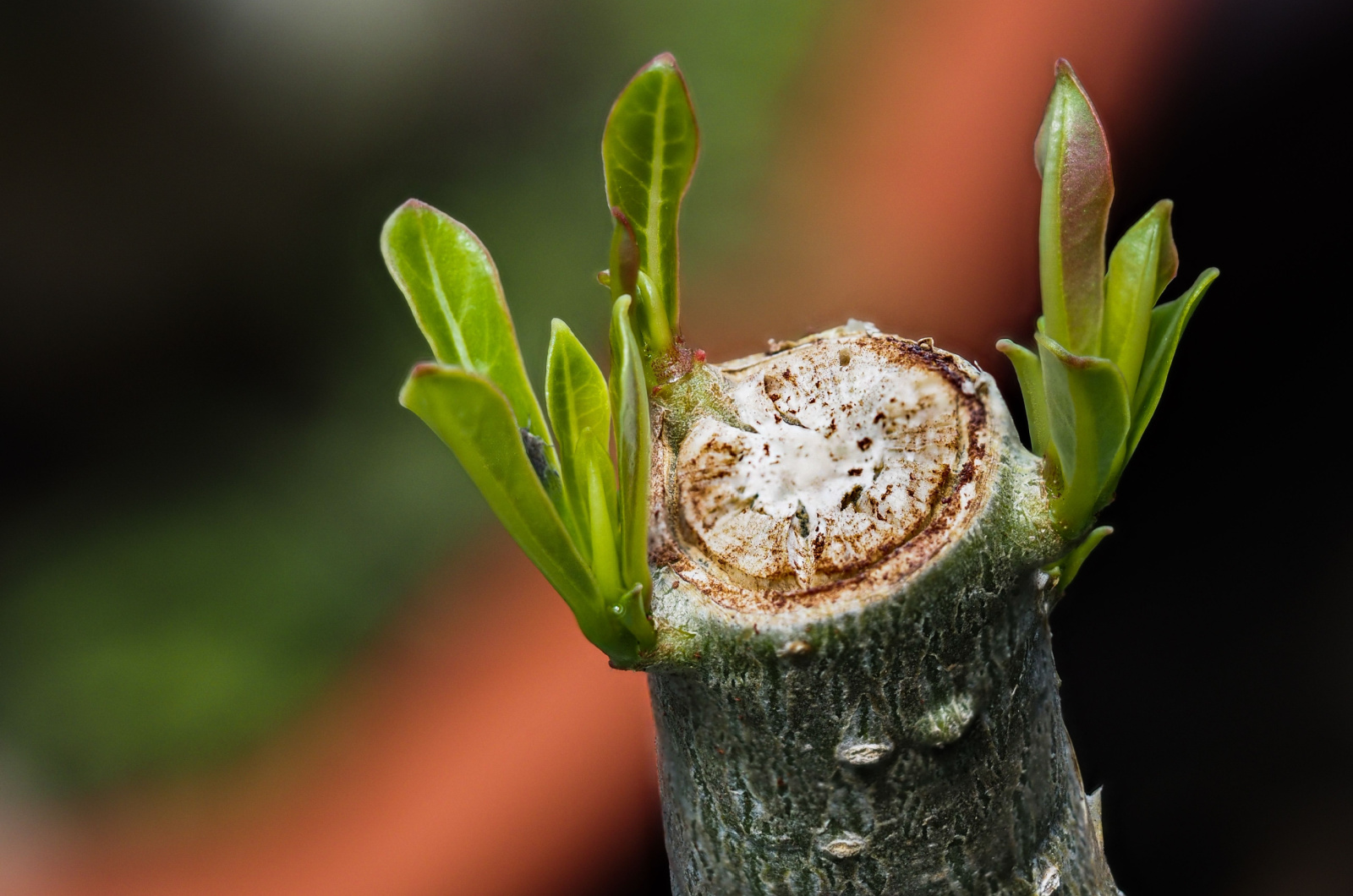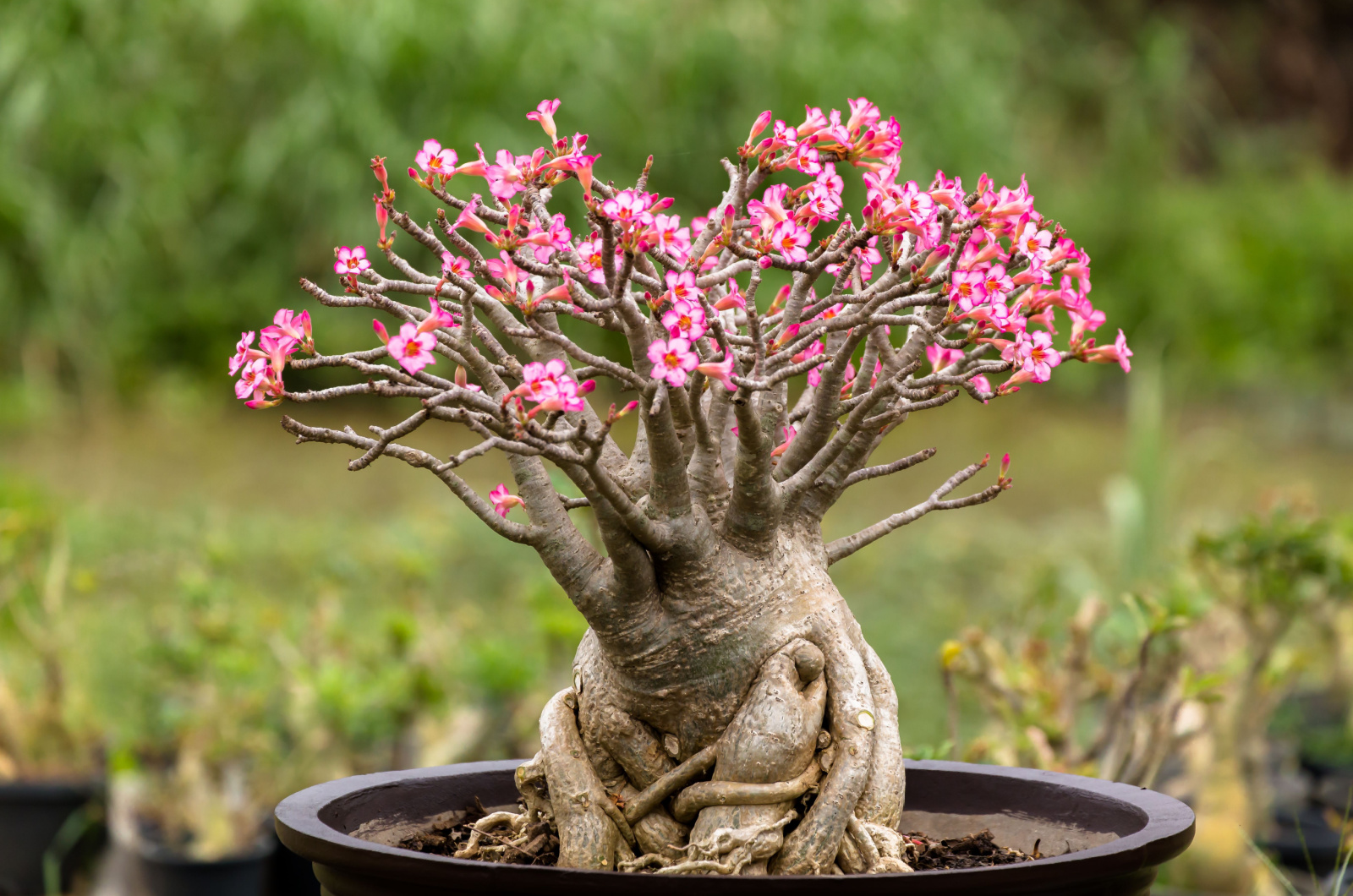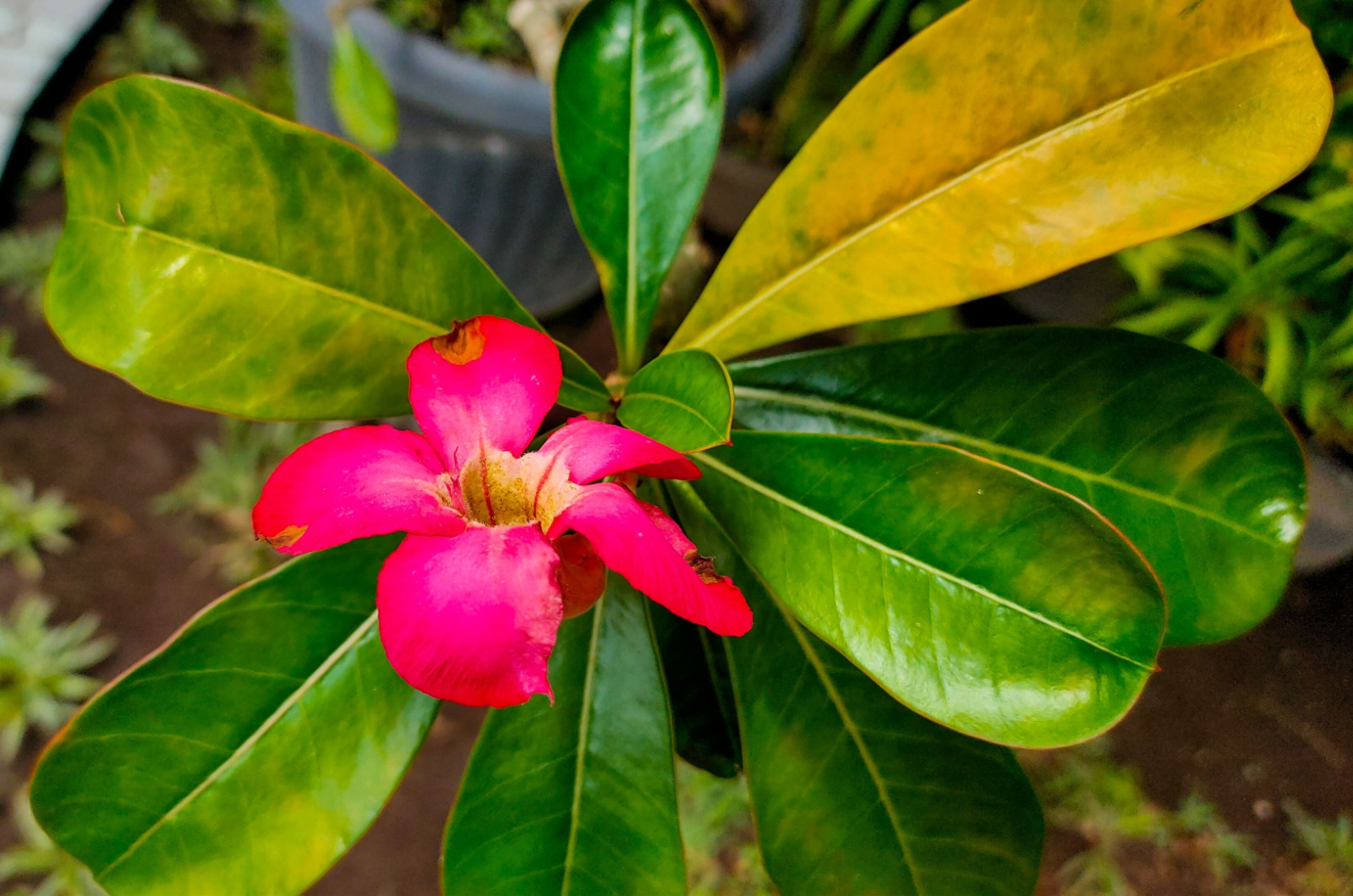For those of you who don’t live in rose-favorable environments but still want to grow a rose garden, then you should definitely consider growing this not-so-traditional rose plant.
The Desert rose is, in fact, a succulent plant that produces a thick trunk and delicate leaves. But those pink, trumpet-like flowers are the star of the show!
These flowering plants don’t need much as they are used to growing in a desert-like environment. Hot weather, poor soil, and low humidity won’t even bother these lovely plants.
In this article, we are going to talk more about the Desert rose succulent and share some tips on how to grow them both indoors and outdoors.
Let’s get started!
How To Grow Desert Rose Indoors
If you are planning to add the Desert rose to your houseplant collection, here’s a thorough guide on how to take care of it!
Light Requirements
With this unique succulent plant, it’s important to mimic its natural habitat – so, six hours of bright, direct sunlight during the day should keep your plant happy and healthy.
Choose a spot in your home where the plant can get plentiful sunlight throughout the day. A south-facing window or bright windowsill will do the trick.
Water Requirements
The Desert rose is used to drier conditions, so it is highly susceptible to overwatering. The watering schedule will change depending on the season – whether the plant is actively growing or it is dormant.
When the plant is actively growing, you will have to water it frequently. However, not too frequent or you would end up with root rot. It’s recommended to wait until the soil is entirely dry before giving your Desert rose another round of irrigation.
During the fall and winter months, the plant will enter dormancy. It should be watered only once a month or so. Still, you should check the trunk to see if the plant is well-hydrated – a thick and swollen trunk means that your plant has plenty of water.
Soil Requirements
Don’t use regular potting soil for your succulent plant. Instead, go and get your plant a succulent mix that will provide it with proper drainage and nutrients. Pumice, perlite, and sand are all ingredients in this mixture that help with drainage.
Poor drainage and overwatering can lead to a dying succulent.
Temperature & Humidity
Since the temperatures can get extremely warm in the desert, it’s important to provide your Desert rose with a cozy and warm environment as well.
The best temperature for this succulent plant is between 65 and 90 degrees Fahrenheit. Don’t let the temperature drop below 50 degrees or the plant will droop.
You don’t have to worry about the humidity levels as you would for tropical plants – these desert beauties can grow well in your home.
Related: Here’s How To Turn Your Cracked Pot Into A Stunning Succulent Garden
Pruning
Prune your Desert rose at the end of the dormant stage to prepare it for new growth. Trim back any regions harmed by the cold, as well as any long, lanky stems to keep the plant well-balanced.
You should also cut off branches that cross or rub against other branches – make sure to cut just above the leaf node or where the stem connects with another stem.
Here’s a useful video on how to properly prune the Desert rose: https://www.youtube.com/watch?v=_tp04jIX4wQ&pp=ygUTZGVzZXJ0IHJvc2UgcHJ1bmluZw%3D%3D
Tips For Growing Desert Rose From Seeds
If you are up to a challenge, you can try and grow Desert rose from seeds!
Early April is the perfect time to start the seeds. Soak the Desert rose seeds in water for a few hours or overnight before planting. Next, spread the seeds 2 inches apart in a soil-filled (remember to use appropriate soil) pot and gently cover them with more soil.
Water them again once the soil has completely dried out. After the seedlings have emerged, you can transfer them to a sunny location.
How To Grow Desert Rose Outdoors
If you plan to keep your Desert rose outdoors, then you should plant it in a dry, clay-like soil, although sandy soil or even gravel will be just fine.
When it comes to temperature and sunlight, it’s similar to indoor succulents. Don’t plant them in shaded areas, but you should also protect them from the scorching sun during hot summer days.
However, it’s important that your lovely Desert rose receives a bunch of sunlight throughout the day.
Overwintering Tips
Don’t grow Desert rose outdoors if you live in a region with prolonged cold temperatures. We’ve already mentioned that they’ll droop if the temperatures drop below 50 degrees Fahrenheit.
In this case, bring the plant indoors and ensure that it doesn’t freeze. Avoid watering it while it’s dormant because the plant is hibernating until spring.
Once the warmer temperatures return, put your plant in a sunny location and start watering it slowly. Gradually reintroduce your succulent to an outdoor life.
Common Issues With Desert Rose
Although it is a sturdy plant that can endure different growing conditions, there might still be some issues with it.
For instance, yellowing of the leaves is caused by overwatering and root rot. Repot the plant, trim back any mushy and decaying roots, remove affected leaves and stems, and then put your succulent in a fresh soil. You can also apply fungicide to get rid of root rot.
If the plant isn’t blooming, then it probably means that it is not receiving enough sunlight. During the spring and summer, you’ll also have to fertilize your Desert rose at least once a month to give them enough nourishment for bloom production.
Spider mites infestation is also common with these roses, so if you spot any webbing or small black dots crawling on the plant, you are probably dealing with spider mites. Leaf discoloration is often a sign of pest infestation, and you should treat it immediately.
Spray your plant with a stream of water or use insecticide or neem oil. It’s better to try with water first, and then consider using other options.
White, powdery spots on the plant’s leaves are often signs of powdery mildew. Put the plant in a dry location and mist it regularly (this fungus doesn’t like moisture). Isolate your lovely desert plant to prevent mildew from spreading to nearby plants.
Related: 5 Signs And Causes Of An Etiolated Succulent + How To Fix It

